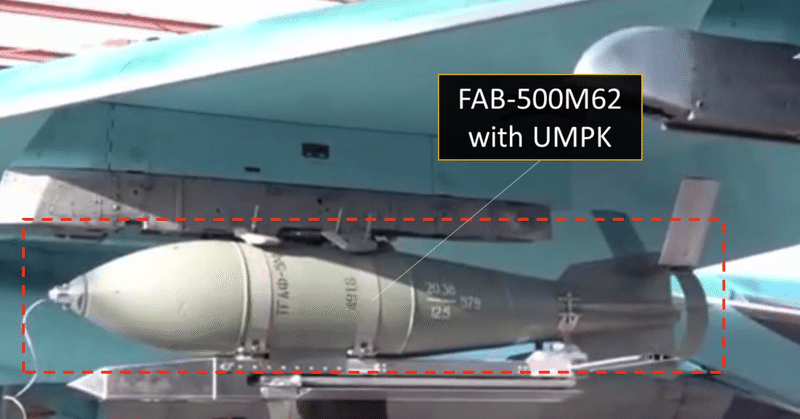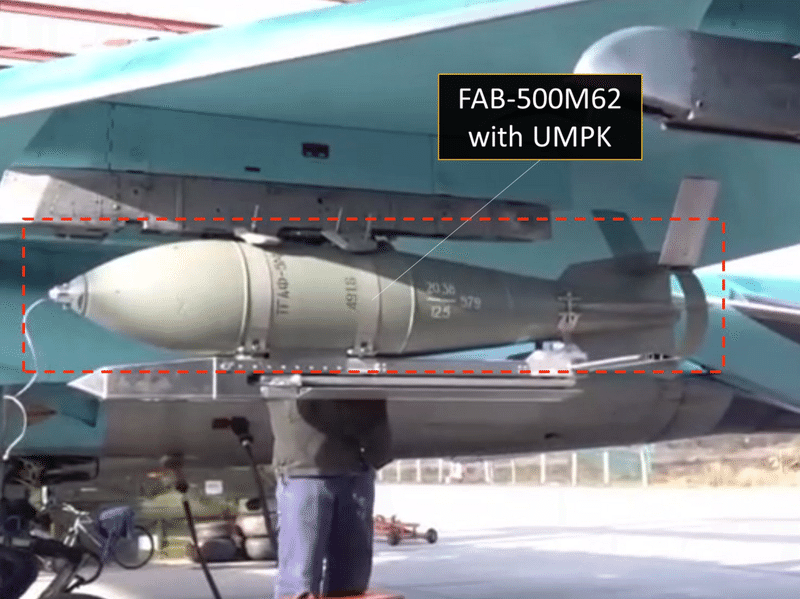
【SNS投稿和訳】ウクライナ情勢:“F-16:取り組むべき課題と開かられるチャンス”
F-16s: Addressing Challenges and Creating Opportunities
— Tatarigami_UA (@Tatarigami_UA) November 20, 2023
Introduction
There have been many developments on the frontlines, including the increased presence of guided aerial bombs, that turn old dumb bombs into more precise and deadly weapons. This poses a significant threat,… pic.twitter.com/4Xb1wXBe3c
上記のリンク先は、ウクライナ軍予備役将校による日本時間2023年11月21日03:17のX投稿です。そのなかで投稿者の@Tatarigami_UA氏(アカウント名)は、ウクライナになぜF-16戦闘機が必要なのか、それがどのような問題解決に結びつくのかを、解説しています。
F-16:取り組むべき課題と開かられるチャンス
日本語訳
はじめに
戦場ではさまざまな進展が続いており、それには増しつつある誘導式航空爆弾の存在もある。この爆弾は、旧式の無誘導爆弾を、より精度の高い危険な兵器に変えるものだ。これは大きな脅威であって、ロシア軍が約60km離れた地点の攻撃目標を狙うことを可能しており、ほとんどの防空システムの射程外にロシア軍航空機を置いておくことも可能にしている。

この戦争は砲兵への依存が激しく、それにより、両陣営に2つの大きな難題を突きつけている。すなわち砲弾欠乏と砲身摩耗だ。それと並行して、単純に戦闘での火砲損失が加わる。これらの問題に対処する試みとして、代替手段ではあるが、両陣営ともに外国からの支援を探しており、その一方で限られた範囲ではあるけれども、FPV[一人称視点ドローン]や航空爆弾のような手段を埋め合わせ的手段として用いている。
課題
誘導式航空爆弾の弾頭積載量が通常砲弾もしくはシャヘドのようなカミカゼ・ドローンよりもずっと大きいことが招く問題が、ロシア軍の誘導式航空爆弾の使用増によって、ますます深刻になっている。ロシアの航空爆弾は、一般的に100〜700kgの範囲の弾頭積載量をもつ。UMPKキットを用いることで、ロシア軍ジェット戦闘機は無誘導爆弾を滑空型爆弾に変えることができ、目標から約50〜65km離れた場所から攻撃対象を狙うことができるようになった。
これによって、ロシア軍戦闘機は、すべてではないにせよ、前線に配備されたほとんどの対空兵器の有効射程外に位置することができている。滑空型爆弾を投下する戦闘機を射程内におさめられる対空兵器の数がウクライナに少なく、それに加えて、この種の兵器は、前線からかなり離れた位置に存在するもっと戦略的に重要な施設を防護する任務に、主として割り当てられている。
実際的な観点でみると、これは組織的な性質をもつ問題だ。既存の対空兵器の数は、ジェット戦闘機が投下する滑空型爆弾の脅威に継続して対抗するには不十分である。

このような技術的進展は、ロシア軍がRBK-500クラスター爆弾を最近になって使うようになっていることを加えると、ロシアがこの種の爆弾に関する産業レベルでの進展を上手くまとめ上げることができ、それがUMPKキットにより性能向上化された場合は特に、今後の潜在的な問題になりうることを示している。
解決策
私見だが、約100kmの運用射程を有するAIM-120Dミサイル(実際はもっと長射程であるという主張もある)で武装したF-16戦闘機を配備することは、上述の問題を効果的に緩和させることができるだろう。この能力をもてれば、ウクライナは最前線に入る飛行をすることなく、滑空型爆弾搭載のロシア軍ジェット戦闘機と交戦できるようになるだろう。そして、その結果、トールやブークのようなロシア軍対空兵器のほとんどを避けることができるようになる。しっかりと覚えておいてほしいのは、ウクライナにはF-16戦闘機のみではなく、それに搭載するアムラーム・ミサイル[AIM-120D]も必要で、その理由は空対空ミサイルで空の脅威を効果的に狙うことにある。

さらにいえば、この解決策は、滑空型爆弾の問題を緩和する可能性だけでなく、ロシア軍ヘリコプターに関わる懸念に対処できる可能性ももたらす。Ka-52とMi-28 NMの両ヘリコプターは攻撃目標から8〜12km離れたところで飛行し、ヴィクルもしくはLMUR[軽量多目的ミサイル]、またはその両方を用いており、今でもウクライナ側の短距離防空システム(SHORAD)の有効射程外で任務を遂行している。
まとめ
この戦争でどちらかの陣営が航空優勢を達成できるという見方には、私は今でも疑問の念を抱いている。なぜなら防空システムの飽和状態が航空優勢を阻止していると思われ、また、ロシアは空対空ミサイルを用いることができる戦闘機を、依然として運用しているからだ。過去の例として戦争初期時が好例であって、その時期、ロシア側の航空戦力と経験豊富なパイロットはもっと多かったにも関わらず、ロシア軍はウクライナ上空を支配できなかった。この失敗は、西側から本格的な防空システムがウクライナに届くずっと前に起きたことで、奇襲効果の利点とウクライナ防空システム及びレーダー施設への大規模で集中的なミサイル攻撃実施という状況下でさえ起きたことだった。
このようなことを考えると、F-16の価値はロシアの航空能力を相当程度、阻害できる可能性にあるのであって、航空優勢を獲得することにあるのではない。その価値は、攻勢作戦遂行中に好ましい局地的な航空情勢を得ること、もしくは一時的な航空優勢を得ることにあるといえるだろう。このことは機動を行う決定的な一瞬のチャンスをもたらしうる。この可能性を現実化するには、適切に武装したF-16をかなりの規模で配備することが必要となる可能性は高い。なお、適切な装備にはAIM-120、AGM-158 JASSM、AGM-154 JSOWが含まれる。
なお、最後に書こうと思って書き忘れてしまった極めて重要な側面がある。それは兵器とレーダーの双方が必要不可欠だということだ。運用距離が100kmを超える高性能なレーダーと兵器の組み合わせが必要なのだ。この組み合わせがなければ、効果は発揮しないだろう。
投稿原文(英文)
F-16s: Addressing Challenges and Creating Opportunities
Introduction
There have been many developments on the frontlines, including the increased presence of guided aerial bombs, that turn old dumb bombs into more precise and deadly weapons. This poses a significant threat, allowing russians to engage targets anywhere around 60 km away, placing them outside the effective range of most air defense systems.
This war is heavily dependent on artillery, leading to two significant challenges for both sides - shortages of ammunition and barrel wear, along with the straightforward combat loss of artillery. In attempts to address these issues, both sides seek foreign assistance, while alternative methods, to a limited extent, such as FPV and aerial bombs serve as partial compensatory measures.
Problem
The increasing use of guided aerial bombs by russians is an increasing problem due to their capacity to carry a much larger payload than conventional artillery shells or kamikaze drones like the Shahed. Russia's aerial bombs typically carry explosives ranging from 100 to 700 kg. With the adoption of the UMPK kit, russian jets gained the capability to transform dumb bombs into gliding munitions, allowing them to target locations from approximately 50 - 65 km away.
This places them beyond the effective range of most if not all, frontline air defense (AD) weaponry. While Ukraine does possess a limited number of AD systems capable of reaching jets deploying gliding bombs, these systems are primarily tasked with protecting more strategically significant installations located farther from the frontline.
In practical terms, this presents a problem of a systematic character. The number of existing AD systems is insufficient to consistently counter the threat posed by jets launching gliding bombs.
Advancement of this technology, coupled with the recent utilization of the RBK-500 cluster bomb by Russians demonstrates the potential for future problems if russia successfully organizes an industrial-level deployment of these bombs, particularly when boosted by the UMPK kit.
Solution
In my view, deploying F-16s armed with AIM-120D missiles, with an operational range of approximately 100 km (with claims that the range is actually much longer), could effectively mitigate this problem. This capability will allow Ukraine to engage Russian jets carrying guided bombs without flying into the frontline, thus avoiding most russian air defense systems like TOR or BUK. It is crucial to remember that Ukraine needs not just F-16s but also the appropriate AMRAAM missiles to effectively target air threats with air-to-air missiles.
Furthermore, this solution has the potential to not only mitigate the issue with glide bombs but also address concerns related to russian helicopters. Ka-52 and Mi-28 NM helicopters, operating 8-12 km away from their targets and deploying Vikhr and/or LMUR missiles, currently remain outside the effective range of Ukraine's Short-Range Air Defense (SHORAD) systems.
Summary
I remain skeptical about either side achieving aerial supremacy in this war, given the saturation of air defense (AD) systems that would impede dominance, and russia still operates fighters capable of deploying air-to-air missiles. A good retrospective example is the early stage of the war, where, despite having a larger russian air force and experienced pilots, they failed to establish control over Ukrainian skies. This occurred even with the advantages of surprise and a massive missile barrage against Ukrainian AD and radar sites, long before any serious AD systems from the West were brought to Ukraine.
Given this, the F-16's value lies in its potential to substantially impede Russian air capabilities rather than provide air dominance, possibly attaining favorable local air situations or temporary air superiority during offensive operations. This could offer a crucial window of opportunity for maneuvering. Realizing this potential would likely necessitate a considerable deployment of F-16s equipped with appropriate weaponry, including AIM-120, AGM-158 JASSM, and AGM-154 JSOW.
The crucial aspect I forgot to include in the last sentence is the essential need for both weaponry and radars. The combination of capable radars and weaponry with an operational range exceeding 100 km is necessary. Without this combination, it won't be effective.
(https://x.com/tatarigami_ua/status/1726666114124403025?s=61)
この記事が気に入ったらサポートをしてみませんか?
